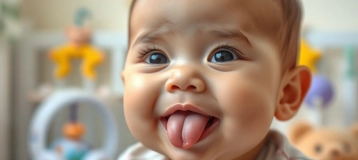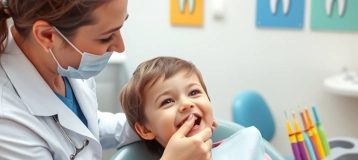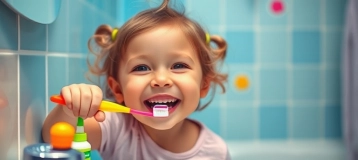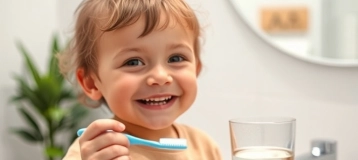A healthy smile begins long before a child's permanent teeth emerge. The foundation for lifelong dental wellness is laid during infancy, and caring for baby teeth is crucial. While these primary teeth will eventually be replaced, they are not immune to decay and cavities. One common and concerning condition is Baby Bottle Tooth Decay, or Early Childhood Caries, which can have lasting consequences. Understanding this condition is the first step toward safeguarding your child's dental future.
Understanding Baby Bottle Tooth Decay
Baby Bottle Tooth Decay is the term for tooth decay that occurs in infants and toddlers, typically affecting the upper front teeth. The primary cause is prolonged exposure to sugary liquids. This often happens when a baby is put to bed with a bottle of milk, formula, or juice, or when a bottle is used as a pacifier. The sugar in these liquids coats the teeth for extended periods, creating an ideal environment for bacteria to produce enamel-eroding acids. The American Academy of Pediatrics notes that any liquid other than water, if left on the teeth for too long, can contribute to decay. Additionally, a lack of fluoride and the transfer of cavity-causing bacteria from a caregiver's saliva can also be contributing factors.
Spotting the Signs
Early signs of this condition can be difficult for a parent to spot. You might notice subtle white spots on the upper front teeth near the gum line. However, due to the small size of baby teeth, these changes can be hard to see without a professional examination. This is why it's highly recommended to schedule your baby's first dental visit around six months of age or when their first tooth appears. An early visit allows a pediatric dentist to provide guidance on oral care and identify any potential issues before they become severe.
If left untreated, baby bottle tooth decay can lead to several problems:
Pain and discomfort for the child.
The potential for expensive dental procedures later on.
Damage to permanent teeth, including affecting their alignment.
Infections that may impact overall health.
Prevention and Treatment
The good news is that Baby Bottle Tooth Decay is both preventable and treatable. Prevention is a combination of mindful feeding habits and consistent oral hygiene.
Preventative Measures:
Clean Gums and Teeth: After each feeding, gently wipe your baby's gums and newly erupted teeth with a damp washcloth or gauze pad.
Avoid Saliva Sharing: Do not share spoons, pacifiers, or other items with your baby to prevent the transfer of decay-causing bacteria.
Brush Gently: Once teeth appear, brush them twice daily with a child-sized toothbrush and a tiny smear (rice-grain size) of fluoride toothpaste.
Mindful Bottle Use: Reserve bottles for feeding and avoid using them as a pacifier. Ensure your baby finishes bottles before going to bed.
Smart Liquid Choices: Only put milk, formula, or water in bottles. Steer clear of sugary juices and sodas.
Check Pacifiers: Ensure pacifiers are clean and not coated in sweeteners.
Treatment Options:
If decay is present, consult with your pediatrician or a pediatric dentist. They will create a treatment plan based on the severity of the condition. In many early cases, tooth enamel can be repaired, particularly with fluoride. Treatments may include:
Fluoride Treatments: This can range from prescribed fluoride toothpaste to in-office treatments like silver diamine fluoride (SDF), which helps remineralize the enamel.
Dietary Guidance: The dentist may recommend low-sugar snacks like cheese or crunchy vegetables and encourage drinking fluoridated water.
Advanced Cases: For more severe decay, a dentist might recommend stainless steel crowns to cover large cavities. In extreme cases of infection or extensive decay, tooth extraction may be necessary to protect the child's overall health and the alignment of future permanent teeth.
The Importance of Early Intervention
Baby teeth act as placeholders for permanent teeth. Losing them prematurely can lead to spacing issues, misalignment, and other orthodontic problems that may require extensive treatment in the future. Establishing good oral hygiene habits early on, from a simple wipe-down of the gums to supervised brushing, is the best way to ensure your child develops a healthy, confident smile that lasts a lifetime. The journey starts with awareness and proactive care.
Pro Tip
The content of the article is shared by netizens, please carefully identify it





